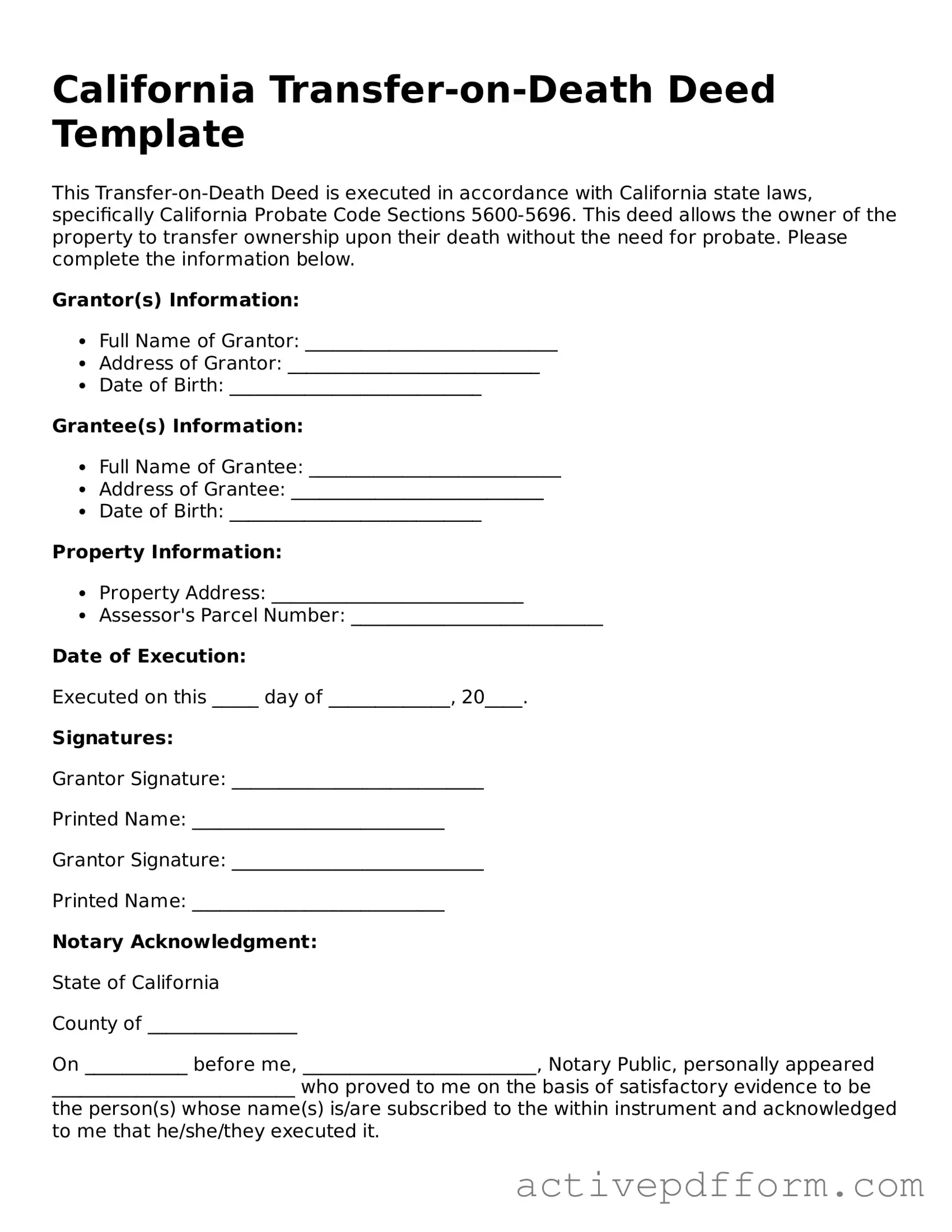What is a Transfer-on-Death Deed in California?
A Transfer-on-Death Deed (TOD Deed) is a legal document that allows property owners in California to transfer their real estate directly to a designated beneficiary upon their death. This deed helps avoid the lengthy and often costly probate process, making it easier for loved ones to inherit property. The transfer occurs automatically without the need for court intervention, as long as the deed is properly executed and recorded before the owner's death.
Who can use a Transfer-on-Death Deed?
Any individual who owns real estate in California can utilize a Transfer-on-Death Deed. This includes homeowners, landlords, and anyone holding title to property. However, it is important to note that the property must be solely owned by the individual. Jointly owned properties or properties held in a trust cannot be transferred using this method.
How do I create a Transfer-on-Death Deed?
To create a Transfer-on-Death Deed, you will need to fill out a specific form that includes details about the property and the beneficiary. The form must be signed by the property owner in the presence of a notary public. After signing, the deed must be recorded with the county recorder's office in the county where the property is located. This recording is crucial, as it makes the deed effective and legally binding.
Can I change or revoke a Transfer-on-Death Deed?
Yes, you can change or revoke a Transfer-on-Death Deed at any time while you are still alive. To do this, you must execute a new deed that either names a different beneficiary or revokes the previous deed entirely. This new deed must also be signed and recorded in the same manner as the original. It is essential to ensure that the most current deed is recorded to avoid confusion later on.
What happens if I do not record the Transfer-on-Death Deed?
If you do not record the Transfer-on-Death Deed, it will not take effect upon your death. The property will then be subject to probate, which can lead to delays and additional costs for your beneficiaries. Recording the deed is a critical step in ensuring that your wishes are honored and that the transfer occurs smoothly.
Are there any tax implications with a Transfer-on-Death Deed?
Generally, there are no immediate tax implications when using a Transfer-on-Death Deed. The transfer of property does not trigger gift taxes, and the property retains its tax basis for the beneficiary. However, it is advisable to consult with a tax professional to understand any potential future tax liabilities or implications, especially regarding property taxes and estate taxes.
Can a Transfer-on-Death Deed be contested?
While it is possible for a Transfer-on-Death Deed to be contested, it is typically more straightforward than contesting a will. Challenges may arise if there are claims of undue influence, lack of capacity, or if the deed was not executed properly. To minimize the risk of contestation, it is recommended to ensure that the deed is executed correctly and to communicate your intentions clearly with family members.
Is a Transfer-on-Death Deed the right choice for everyone?
A Transfer-on-Death Deed can be an excellent option for many individuals, but it may not be suitable for everyone. It is particularly beneficial for those who wish to transfer property without going through probate. However, individuals with complex estates, multiple properties, or specific wishes regarding their estate may want to consider other estate planning tools, such as trusts or wills. Consulting with an estate planning professional can help you determine the best approach for your unique situation.
